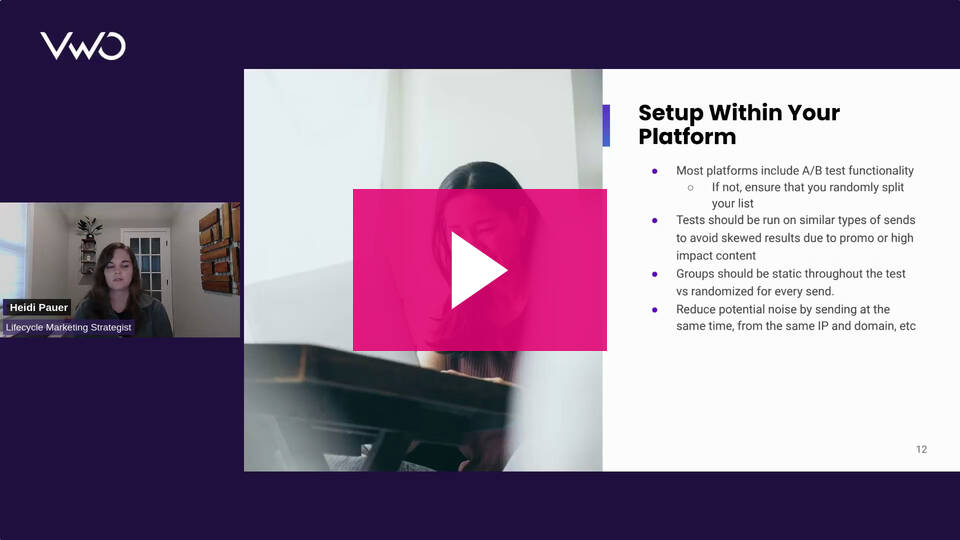43 Conversion Rate Optimization Statistics You Must Know in 2024
Hold on a minute…
Are you relying on marketing strategies from some years ago?
Given how rapidly trends and customer behavior have evolved in the past few years, that data is outdated and irrelevant today.
In fact, you can in no way base your optimization and experimentation efforts on such data.
Imagine you run a D2C brand, and for the past few years, you figured the average website conversion rate in your industry was 1%-2%. Content with this, you suddenly stumble upon some data and realize everyone else has leveled up — the new average is a whopping 3.5%. Now, you have to level up your game if you want to stay competitive.
This is why you need fresh, up-to-date data in your hands to stay ahead. In this blog, we share the latest conversion rate optimization statistics, keeping you in tune with what’s working today. With this data, you can ensure your strategies are relevant and capable of turning your website visitors into paying customers.
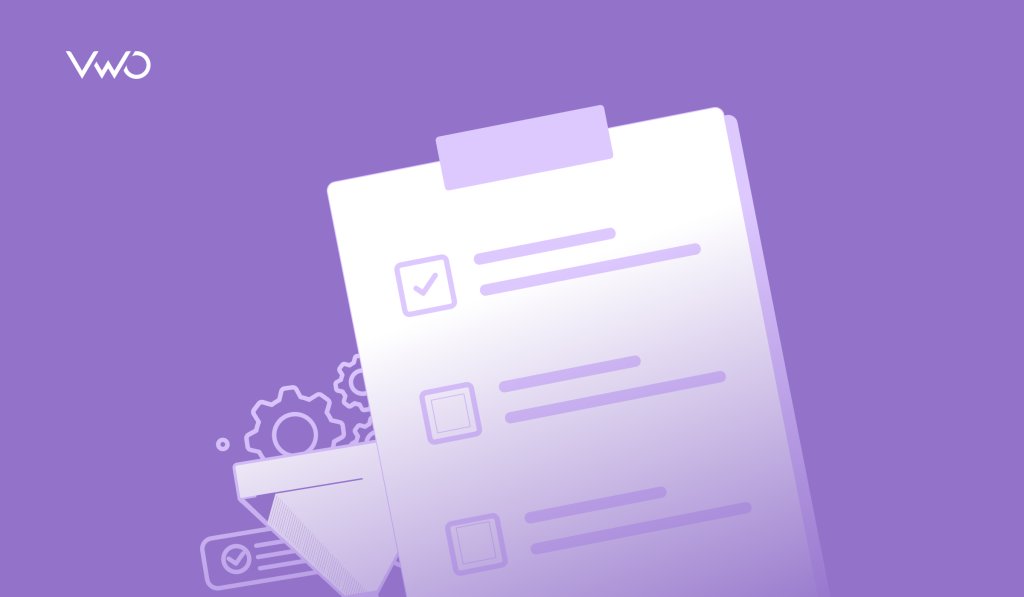
Average conversion rate across industries:
Source: Ruler’s Conversion Benchmark Report
1. The average conversion rate in B2B eCommerce is 1.8%.
The high-value nature of many B2B transactions often leads buyers to adopt a more cautious approach. B2B companies should prioritize understanding their unique customer journey, creating relevant content, and implementing targeted strategies to address the complexities inherent in the B2B buying process, with the goal of improving conversions. Testing ideas such as a multi-step checkout process, personalized pricing models, and implementing live chat for fast query resolution are some strategies that B2B eCommerce businesses can explore.
Learn how EcoFoil, a leading US-based supplier of radiant barrier and foil bubble insulation, increased purchases on its website by 86%.
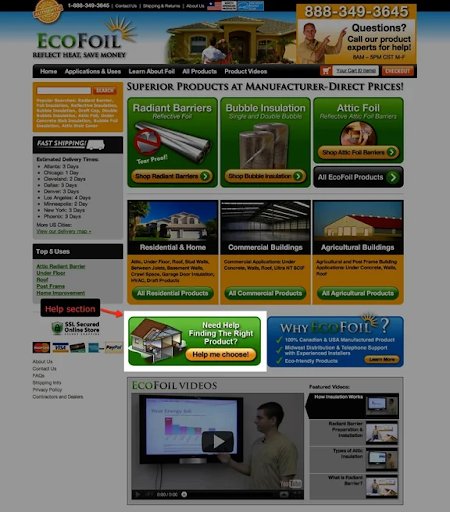
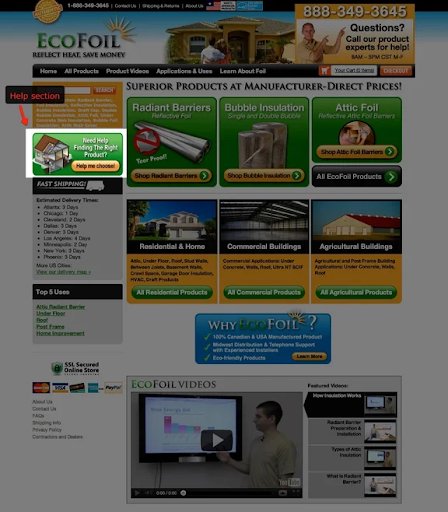
2. The average conversion rate in B2C is 2.1%.
For B2C players, one potential area for enhancement could be the checkout process. Testing ideas include simplifying the checkout steps, implementing a guest checkout option, and optimizing the mobile checkout experience to reduce friction. Additionally, personalizing product recommendations based on visitor behavior, refining product page layouts for clarity, and testing promotional strategies may contribute to lifting B2C eCommerce conversion rates.
Learn how Hush Blankets fixed functional and usability issues on its desktop cart page and mobile product page and increased revenue by 23%.
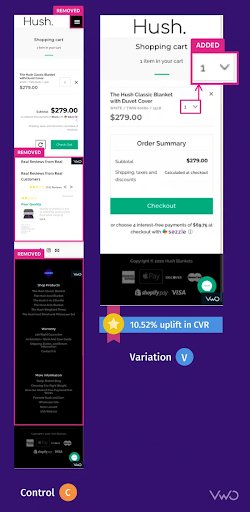
3. The average conversion rate in professional services is 4.6%.
Professional service companies can strategically test elements such as the design and placement of “Schedule a Consultation” buttons for optimal appointment bookings.
Moreover, experimenting with trust-building elements like client testimonials, industry certifications, and success stories can positively impact conversion rates on B2B websites.
Delaware-Harvard Business Service tweaked the navigation bar and CTA text, which increased the number of completed orders by 15.68%. Read the full success story now.
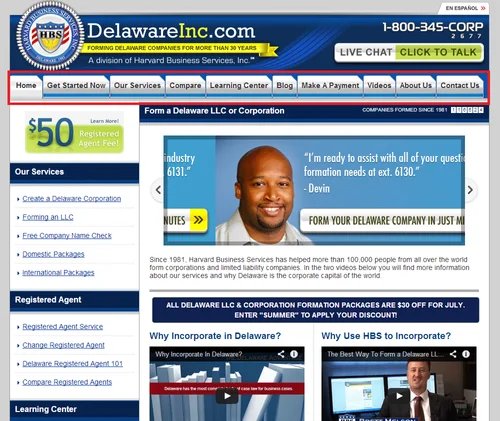
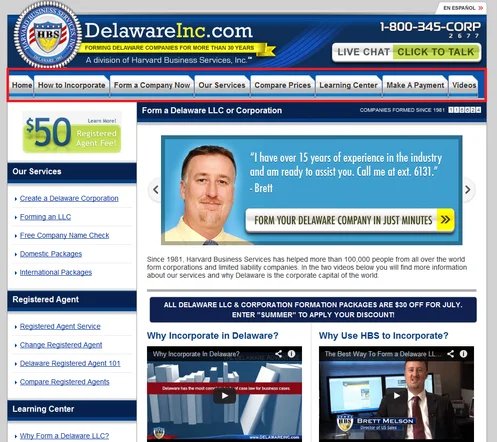
4. The average conversion rate in finance is 3.1%.
The financial sector often involves intricate decision-making processes, regulatory considerations, and a need for high trust levels. To address these challenges and boost conversion rates, financial institutions can experiment with simplified application processes, personalized financial education content, and A/B testing different trust-building elements on their websites. Implementing interactive calculators or tools can also help improve engagement and conversion rates.
Reassured, a UK-based insurance company achieved a 31.23% increase in form submissions by redesigning their life insurance quotation form on the website. Read the success story now.
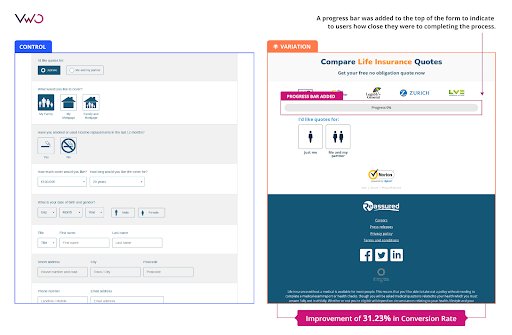
5. The average conversion rate in travel is 2.4%.
Streamlining booking interfaces, personalizing travel recommendations, and implementing features that address common traveler concerns, such as flexible cancellation policies can improve visitor experiences and increase conversion rates.
Last but not the least, experimenting with targeted promotional campaigns and loyalty programs may encourage repeat bookings in the travel sector.
Djoser, a Netherlands-based travel agency, added a CTA on its website, resulting in a 33% increase in bookings. For more details, read the case study.
6. The average conversion rate in healthcare is 3%.
In the healthcare space, website conversion challenges might stem from the sensitive nature of decisions, complex information, and regulatory concerns. To boost conversions, healthcare companies can optimize content for clarity and trust-building. Displaying certifications from regulatory bodies and expert badges assures patients that the healthcare provider or product adheres to industry standards and compliance regulations.
Moreover, implementing a visitor-friendly appointment scheduling process and adding patient testimonials are effective ways to improve the overall experience, potentially improving conversion rates.
Dr. Muscle, a healthcare website, carried out a pricing page test that improved revenue by 61.67%. Read the success story to know more about their strategy.
7. The average conversion rate in legal is 3.4%.
An average conversion rate of 3.4% indicates a reasonable performance, but there’s always room for improvement. But what we must understand is that the nature of legal services often involves complex decision-making and a high level of trust.
To address potential challenges, companies can test personalized content addressing specific legal needs and implement a transparent, visitor-friendly consultation scheduling process. Test the placement of testimonials and case studies to bring them to the sight of website visitors and influence them positively.
See below how Schank + Associates, a law firm, has shown a streamlined form on the left side with the USPs for engaging their services on the right.
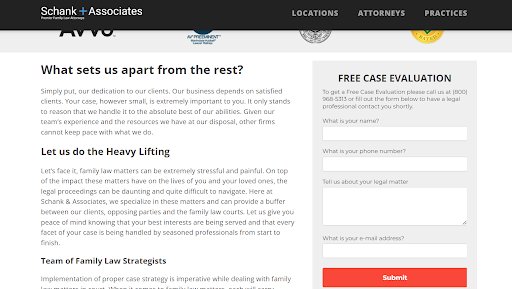
8. The average conversion rate in higher education & college is 2.8%.
Choosing a college involves evaluating factors like programs, campus life, and finances. The long enrollment process requires consistent communication, making it hard to convert prospective students quickly. Moreover, the long enrollment process requires consistent communication, making it hard to convert prospective students quickly.
To improve conversion rates, colleges and universities should create a more streamlined and personalized enrollment experience, offering detailed information at every step of their admission journeys.
Hotel Institute Montreux in Switzerland placed a testimonial above the lead generation form, resulting in a 50% increase in form submissions. Read the success story for inspiration for your website.
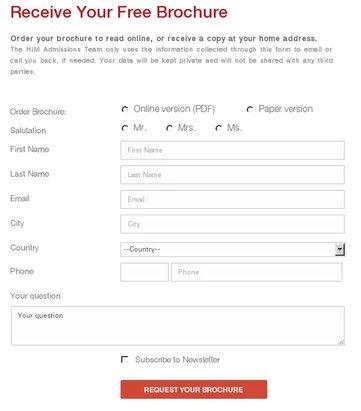
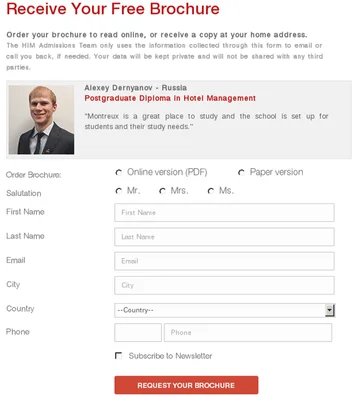
eCommerce conversion rates for specific vertices:
Source: Statista
9. Food & Beverage: The average conversion rate is 2.6%.
Potential improvements might focus on optimizing product visibility, highlighting USPs, and testing promotional strategies like bundle offers or limited-time discounts to encourage quicker decision-making.
10. General apparel: The average conversion rate is 2.2%.
The players in the apparel industry may benefit from testing product images, product descriptions, sizing guides, and simplifying the check-out process to address cart abandonment and boost overall conversion rates.
11. Beauty & skincare: The average conversion rate is 2.7%.
Try out personalized product recommendations, make subscription checkouts easier, and utilize user-generated content for building trust.
12. Toys & learning: The average conversion rate is 2.1%.
For toys and learning businesses, optimizing product categorization and search functionality, implementing interactive elements such as product videos, and offering discounts can boost conversions. You can also try upselling and cross-selling to see if that adds to more revenue.
13. Electronics & accessories: The average conversion rate is 2.1%.
You can optimize navigation, showcase customer reviews, and provide personalized recommendations to improve conversions on these websites. Infuse urgency with promotions, maintain an insightful blog section, and ensure a seamless checkout process. Look at how BestBuy talks about a product, what’s included, and the benefits on its product page in a clean and clear format. It makes information easy to consume for visitors, encouraging them to convert.
Industry practices affecting CRO stats:
14. Pages that load slowly result in a 7% decrease in conversions.
Source: BigCommerce
Today’s online visitors are impatient, seeking quick access to information. Slow page load times can result in frustration, abandonment, and decreased conversion rates. Prioritize improving your page load speed, aiming for load times within 0-2 seconds.
15. For every $92 spent on getting new customers, companies only put $1 into improving conversion rates.
Source: HubSpot
Marketing efforts directed towards existing customers are often more cost-effective than acquiring new ones, as the need for extensive advertising and outreach is reduced. This approach not only maximizes the lifetime value of customers but also contributes to a more sustainable and efficient business model.
16. Adding a video to your landing page can up your conversion rates by 80%.
Source: Saleslion
Videos boost website conversions by engaging visitors, building trust through visual storytelling, and demonstrating products effectively. Read some great tips on how you can leverage videos for improved conversions.
17. By 2025, about 30% of companies are likely to use AI to improve their testing processes, compared to just 5% in 2021.
Source: Gartner
Across diverse industries, from medical to technology sectors, AI is being harnessed for enhanced efficiency. It’s crucial for businesses to invest in CRO tools that harness the capabilities of Gen AI for greater conversions.
Witness how AI generates testing ideas in VWO in the video below:
18. Businesses that use conversion rate optimization tools typically see a 223% average return on investment.
Source: 99firms
CRO is an end-to-end process, from doing research to prioritizing ideas, choosing the right tools, and implementing changes. It is this systematic approach that fixes gaps in visitor journeys, helping you maximize conversions. If you are not sure you’re using the right tools at each stage, read our list of top CRO tools and software and take your pick.
19. Only 39.6% of companies have a formally documented CRO strategy.
Source: Invesp
By documenting the CRO learnings, teams can track the development of strategies, learn from past outcomes, and avoid repeating ineffective approaches. This practice fosters transparent communication, knowledge sharing among team members, and efficient progress tracking. Learn how the VWO Plan helps businesses keep track of their testing hypotheses and share them with their team for increased collaboration.
20. Merely 22 percent of businesses express satisfaction with their conversion rates
Source: HubSpot
The key takeaway is to maintain a drive for continuous improvement. Instead of settling for average conversion rates, businesses should implement effective CRO processes and strategies to stay ahead of the competition.
21. 25% of businesses identify outdated technology as their primary obstacle to boosting website conversions.
Source: 99firms
Modern technologies come packed with features and seamless integrations across platforms, streamlining the website optimization process for businesses. Read our blog to discover key considerations when choosing the right tool for your needs.
22. 41.6% of companies have small testing teams of 2-10 people, while another 40.2% have slightly larger teams of 11-25.
Source: Kobiton
Having a sufficient number of testers on your team undoubtedly contributes to boosting testing velocity and accelerating the learning curve. The number of testers matters, but without a well-defined approach to A/B testing, you might miss the mark. A streamlined process ensures efficient testing, meaningful learning, and actionable insights. It’s not just about the quantity; it’s about the quality of your testing strategy.
23. A/B testing is the second most popular method for improving conversion rates, after analytics.
Source: Adobe
A/B testing involves comparing two variations of page elements to determine which one positively impacts your conversion metric. It’s an efficient method for testing ideas and gauging their potential to influence metrics, saving time by avoiding the implementation of ineffective strategies.
Learn more and clear any doubts about A/B testing by watching the webinar below.
Channel-wise conversion rate optimization stats:
Source: FirstPageSage
24. Average conversion rates from SEO for B2C and B2B are 2.1% and 2.6% respectively.
To get more results from your SEO strategy, conduct in-depth keyword research, consistently create high-quality, user-centric content, and ensure a mobile-friendly website. Regular content updates, strategic backlinking, and prioritizing visitor experience will contribute to more visibility and increased organic traffic.
25. Average conversion rates from SEM/PPC for B2C and B2B are 1.2% and 1.5% respectively.
Start out with meticulous keyword research, crafting compelling ad copy, and optimizing landing pages for conversions. Regularly monitor and refine campaigns, adjust bidding strategies, and incorporate ad extensions to enhance visibility and relevance. Aligning campaigns with user intent is crucial for paid marketing initiatives.
26. Average conversion rates from paid social for B2C and B2B are 2.1% and 0.9% respectively.
Develop content that resonates with your target audience and leverage audience targeting features for precise reach on social media platforms. Experiment with diverse ad formats, continuously monitor performance metrics and optimize campaigns for maximum engagement and conversions.
27. Average conversion rates from email marketing for B2C and B2B are 2.8% and 2.4% respectively.
Outperform the benchmark in email marketing by implementing personalization, segmentation, and outreach automation strategies. Craft compelling, relevant content and utilize A/B testing to optimize subject lines, content, and CTAs.
28. Average conversion rates from webinars for B2C and B2B are 1.3% and 2.3% respectively.
Webinars are the top choice for thought leadership because they engage audiences with live discussions, provide a dynamic learning experience through visuals and audio, and showcase thought leaders’ expertise.
Contrary to common belief that webinars are only for B2B, their potential for B2C is often overlooked due to low conversion rates. Just thinking out loud – a retail fashion brand could consider a ‘Seasonal Style Showcase’ webinar, featuring fashion experts, styling tips, and exclusive discounts to engage and provide value to consumers.
Page elements contributing to improved conversion rates:
29. According to research, having at least 50 reviews can boost your conversion rate by up to 4.6%.
Source: LinkedIn
When potential customers see a product or service with a substantial number of reviews, it signals social proof and reliability to them. The presence of at least 50 reviews suggests that others have tried and found value in the offering, instilling confidence in online buyers.
See how Buildium, a property management software company, increased free-trial sign-ups by 22% by improving the testimonial headings on its website homepage. This shows presenting your testimonials in a proper way is as important as adding them to come off as more trustworthy to your website visitors.
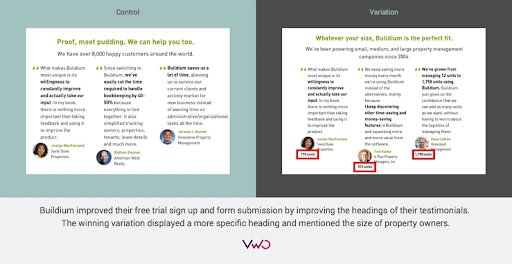
30. About 30% of the best landing pages use videos, and adding relevant video content can increase conversions by as much as 86%.
Source: HubSpot
Relevant video content helps capturing and retaining visitor interest, ultimately driving more conversions. Find out more about the additional elements your landing page needs to effectively convert traffic into leads.
31. Placing CTAs above the fold can boost conversions by 317%.
Visitors often make quick judgments about a webpage within the first few seconds of landing on it. Placing CTAs above the fold ensures they are seen during this critical time of making an initial impression on audiences. Learn how Human Interest placed their lead gen form above the fold and increased form submissions by 75.84%.
32. Exit popups generally result in an extra 2 to 4% conversion of your website traffic.
Source: Optinmonster
Not one of the expected CRO stats, right? Not many would have anticipated the influence of exit pop-ups. The principle behind this behavior is that a targeted message or incentive at the point of exit can re-engage users, prompting some to reconsider and complete a desired action before leaving the site. Read how IBM Bank showed an exit pop-up on its personal loan application form and improved conversion by 87%.
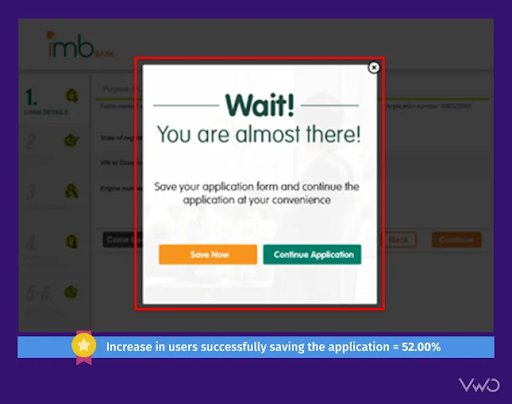
33. Adding a live chat increases revenue per chat hour by 48% and conversion rates by 40%.
Source: Hiver
The real-time interaction and assistance through live chat contribute to a more positive customer experience, fostering trust and encouraging more successful conversions. Hear experts talk about improving conversions with live chat in this webinar:
34. Titles containing a question get 15% more clicks than regular titles.
Source: Backlinko
Questions in titles evoke curiosity among readers and encourage them to check out the rest of the content to find the answer. Headline testing is the low-hanging fruit businesses can focus on to secure those early conversion wins. Read our content to learn more about headline testing.
35. Using CTAs as clickable text in blogs can increase conversion rates by up to 121%.
Source: Invesp
Action-oriented CTAs in the text guide readers toward taking specific actions, such as signing up for a newsletter, downloading a resource, or making a purchase.
Critique Jeu is a French consulting firm providing expert guidance on online casino games. Their aim was to improve interpage navigation on their website, and thus, they changed the color of internal text links. This change improved clicks on internal links by 22.8%. This shows that not only does a clickable CTA matter but even altering its color can significantly impact conversion rates.
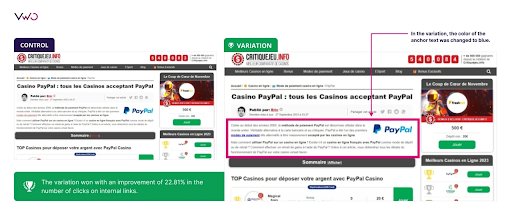
Data specific to A/B testing trends across industries:
Source: VWO – A/B Testing Insights Report 2023
At VWO, we delved into a large-scale analysis, examining over 1 million tests conducted on 100,000 websites across 18 diverse industries to bring you cutting-edge insights and industry benchmarks. Check out some great CRO facts from the report below:
36. 60-70% of tests conducted by gaming & sports companies have winning variations.
37. Media & entertainment companies test 4-6 variations on average in each experiment.
38. Travel companies run 24-60 tests per account per year.
39. On average, most industries conduct about 24 tests per account each year.
40. About 60% of the tests conducted in 2023 had similar goals, mostly focused on increasing revenue and engagement.
41. Experiments during the pre-holiday period observed a 20-30% increase in most of the businesses.
42. Health companies typically establish four goals when conducting A/B tests on their websites.
43. Approximately 75% of the leading 500 online retailers use A/B testing platforms.
This is just the tip of the iceberg. Explore more interesting facts in our eBook. Download now to see how you compare with others in your industry.
Way forward
Wrapping up our exploration of the 43 conversion rate optimization stats, I hope it’s now clear how your industry counterparts leverage conversion optimization. Think it’s high time to ramp up your CRO efforts? With access to industry data, now is the perfect moment to pivot your research inward—toward your business, your website, and the wealth of untapped potential waiting to be uncovered. Whether you’re deep-diving into visitor research or executing optimization programs, VWO can help you stay ahead through a culture of experimentation. Ready for a transformative journey? Take a free trial today.


